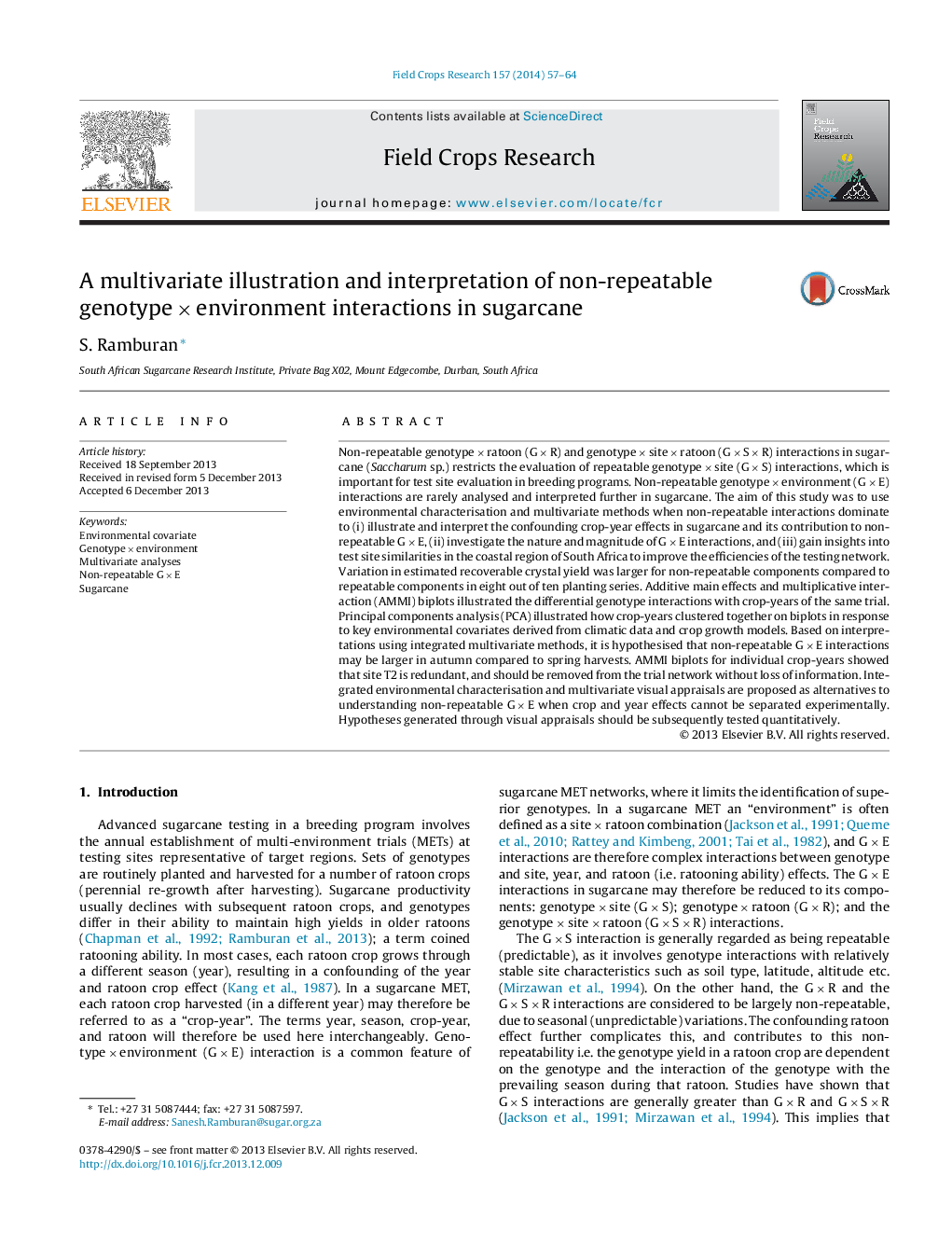| Article ID | Journal | Published Year | Pages | File Type |
|---|---|---|---|---|
| 4510152 | Field Crops Research | 2014 | 8 Pages |
Abstract
Non-repeatable genotype Ã ratoon (G Ã R) and genotype Ã site Ã ratoon (G Ã S Ã R) interactions in sugarcane (Saccharum sp.) restricts the evaluation of repeatable genotype Ã site (G Ã S) interactions, which is important for test site evaluation in breeding programs. Non-repeatable genotype Ã environment (G Ã E) interactions are rarely analysed and interpreted further in sugarcane. The aim of this study was to use environmental characterisation and multivariate methods when non-repeatable interactions dominate to (i) illustrate and interpret the confounding crop-year effects in sugarcane and its contribution to non-repeatable G Ã E, (ii) investigate the nature and magnitude of G Ã E interactions, and (iii) gain insights into test site similarities in the coastal region of South Africa to improve the efficiencies of the testing network. Variation in estimated recoverable crystal yield was larger for non-repeatable components compared to repeatable components in eight out of ten planting series. Additive main effects and multiplicative interaction (AMMI) biplots illustrated the differential genotype interactions with crop-years of the same trial. Principal components analysis (PCA) illustrated how crop-years clustered together on biplots in response to key environmental covariates derived from climatic data and crop growth models. Based on interpretations using integrated multivariate methods, it is hypothesised that non-repeatable G Ã E interactions may be larger in autumn compared to spring harvests. AMMI biplots for individual crop-years showed that site T2 is redundant, and should be removed from the trial network without loss of information. Integrated environmental characterisation and multivariate visual appraisals are proposed as alternatives to understanding non-repeatable G Ã E when crop and year effects cannot be separated experimentally. Hypotheses generated through visual appraisals should be subsequently tested quantitatively.
Related Topics
Life Sciences
Agricultural and Biological Sciences
Agronomy and Crop Science
Authors
S. Ramburan,
